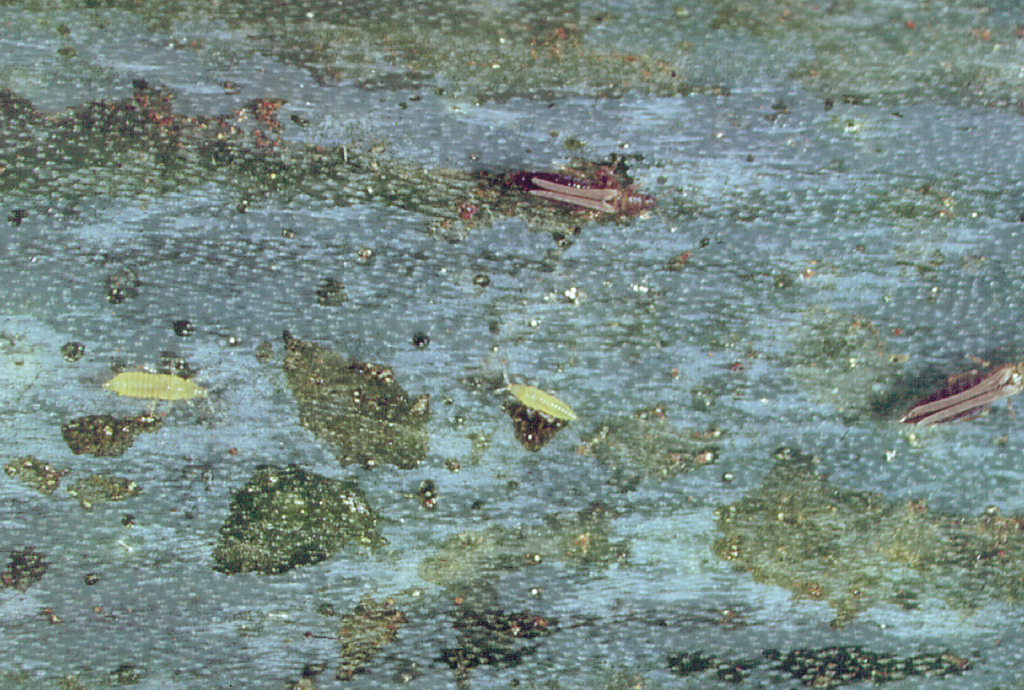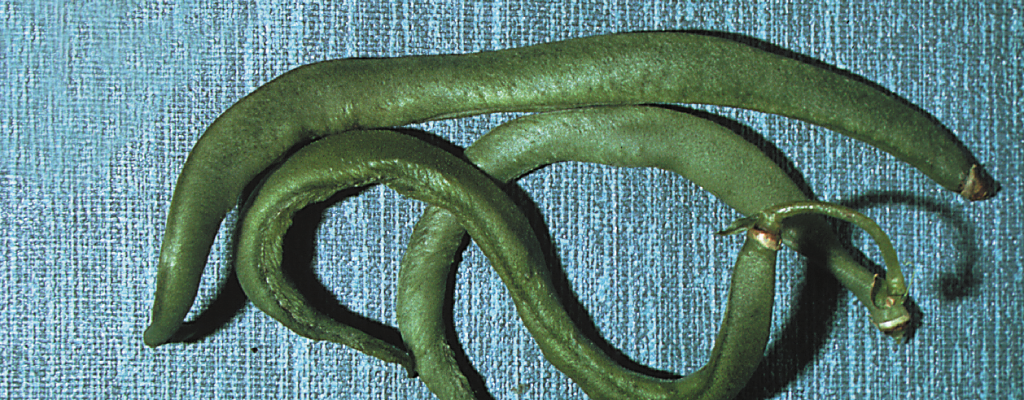Many of the thrips species in Australia feed on fungi, but several species can be a problem in agricultural crops. For many field crops, thrips are only a significant pest at the seedling stage, with both adults and nymphs sucking the contents of surface (epidermal) cells from the underside of cotyleons/leaves, and plant terminals. Affected areas turn silvery-white, younger leaves become distorted and growing points can die if thrips pressure is high. Damage is more significant if seedlings are not vigorously growing.

Adults and immature thrips
Flower thrips (including tomato, plague and western flower thrips) feed and breed inside the flowers. Crops are at greatest risk during flowering and podset. Thrips feeding inside navy bean and mungbean flowers can cause flower abortion and pod distortion. While vigorously growing crops can usually compensate for flower abortion, deformed pods may be difficult to thresh, resulting in additional yield losses.
Thrips can also be vectors for tospoviruses such as tomato spotted wilt virus (TSWV) and capsicum chlorosis virus (CaCV) in legume crops, and assist the transmission of some plant diseases (e.g. thrips feeding damage can provide an entry point for tobacco streak virus-infected pollen).

Thrips damage to pods
Eggs are laid in a slit in plant tissue and there are two larval stages of are a similar shape but wingless, and both pre-pupal and pupal stages. Adult thrips are about 2mm long and cigar-shaped with 2 pairs of narrow wings (in some species fringed with hairs) folded along their back. The lifecycle can complete in less than two weeks under favourable conditions.
Inspect plants weekly during the seedling and early vegetative stages. In cracking soils, thrips can reach seedling before they emerge above the soil surface. In mung and navy beans, look inside the flowers. Flowers and growing terminals can also be added to 70% alcohol to dislodge thrips for later counting.
Thrips can also prey on mites, and are more likely to survive and thrive if they do so. When they occur together, thrips produce dark green specking due to liquid faecal deposits, whereas spider mites produce black faecal granules.
Although there are predators of thrips, including pirate bugs, lacewing larvae and ladybirds, none effectively control thrips populations due to their high reproductive rates and early season pest status.
Most thrips species are controlled reasonably well by seed treatments and early targeted sprays or in-season applications of systemic products to control other pests of pulse flowers, however western flower thrips are resistant to most registered insecticides. Re-infestation can be rapid, so more than one spray may be required. If managing thrips in seedlings, consider narrow banded spraying directly on the plant rows to reduce the total pesticide applied per hectare.
A hand lens or microscope is required to determine thrips species:
- Western flower thrips (Frankliniella occidentalis) attack cotton, summer pulses, sunflower, canola and peanuts. Using soft pesticides against other pests may conserve other thrips species which, by competing with western flower thrips, may slow the latter’s population growth.
- Tomato thrips (Frankliniella schultzei) attack summer pulses.
- Maize thrips (Frankliniella williamsi) attack maize. Thrips in the whorl can stop the growth of small plants, particularly if under water stress or if waterlogged. Control if plants develop yellowing in the throat and/or necrotic stripes on young leaves, and thrips are found in the throat.
- Plague thrips (Thrips imaginis) attack summer pulses.
- Onion or cotton seedling thrips (Thrips tabaci) attack cotton, summer pulses, and cereals. Spring-planted crops are at greatest risk, especially those close to maturing cereal crops.
A large range of weeds can host thrips. Control weeds in both cropping and non-crop areas around your farm year-round.
Surveillance for resistance in seedling thrips
In 2023/24 NSW DPI commenced resistance surveillance in seedling thrips. There was no resistance detected to dimethoate or thiamethoxam. However, resistance to fipronil was detected in 18% of seedling thrips from northern NSW. These thrips were found to be carriers of a major target site mechanism for Group 2B resistance (the RDL gene) and is the first reported detection of this mutation in Australian seedling thrips.
Further information
- Thrips (Queensland Government)
- Which thrips is that? (NSW DPI pdf)
- CottonInfo videos on thrips:
- Thrips and tospovirus biosecurity risk analysis (DAFF)
- Thrips and tospovirus: a management guide (Ausveg)
